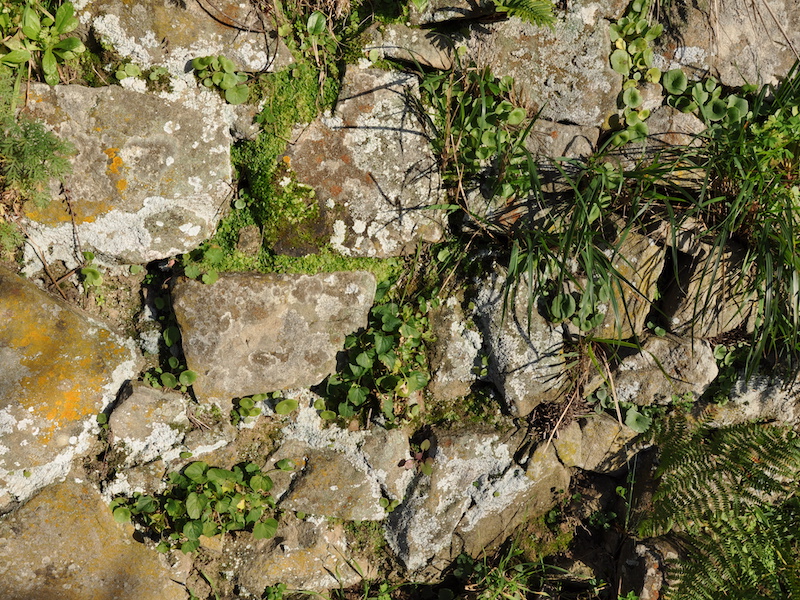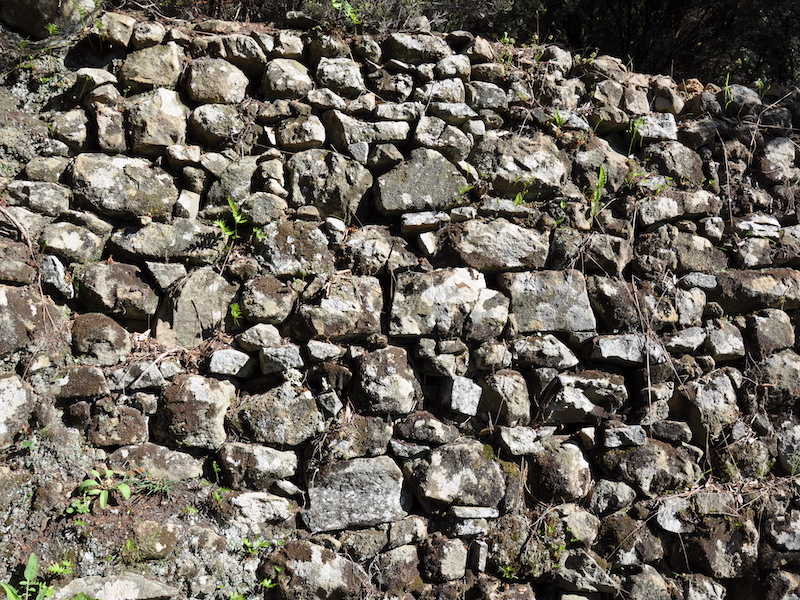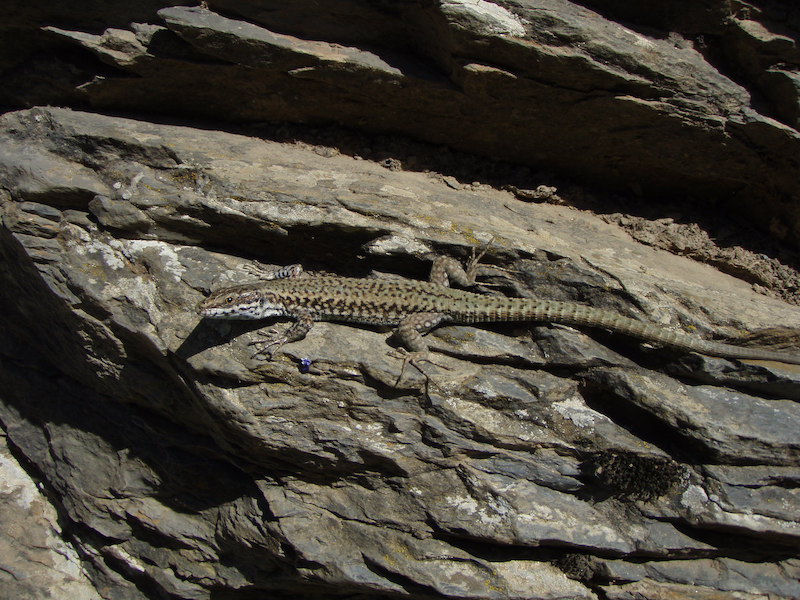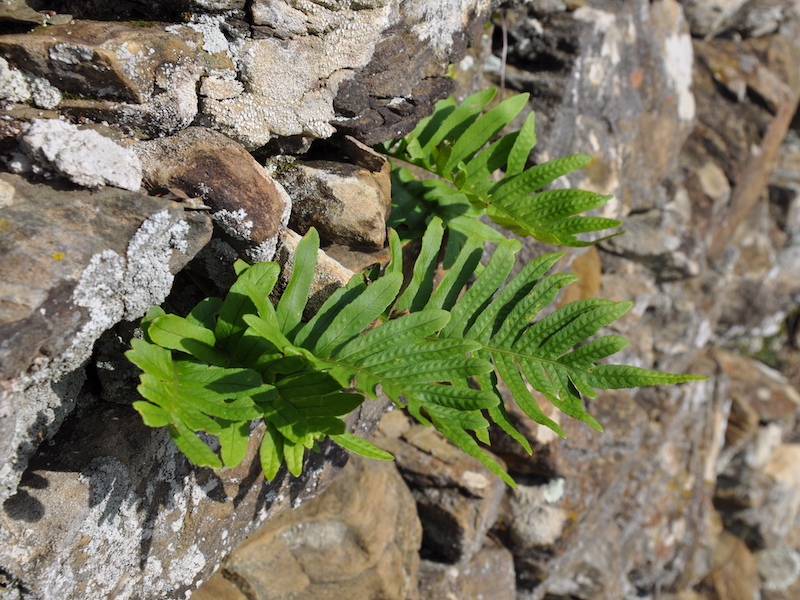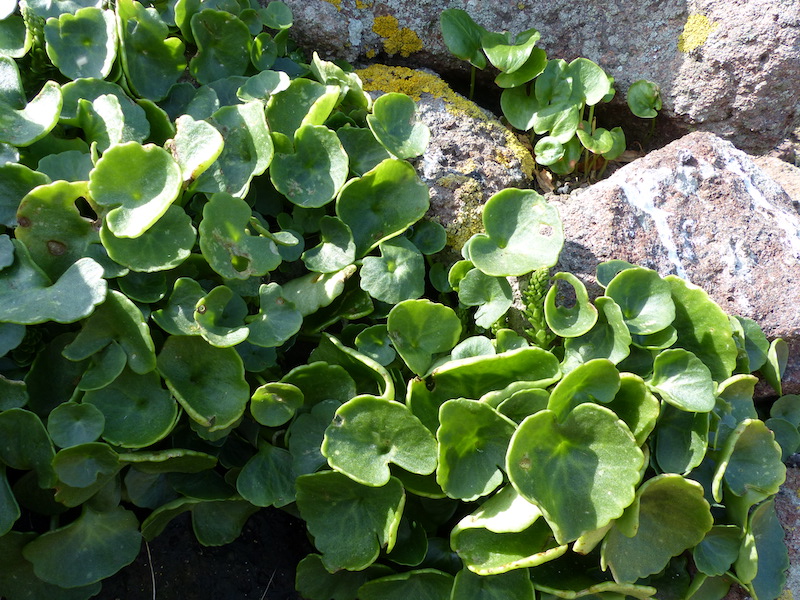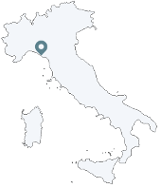The distinctive landscape at Cinque Terre features agricultural land obtained by shaping the slopes into terraces, with dry stone walls to contain the soil. Even if they are artificial structures, made to turn the natural incline of the mountains into a series of small, flat fields where vineyards could be grown, the dry stone walls are made nonetheless of local natural materials - stone and soil - and they house plants and animals that add to the biodiversity of the protected area.
The dry stone wall is a vertical, rocky, arid, nutrient-poor habitat, directly exposed to the weather and subject to wide temperature range. It is therefore highly selective for flora and fauna: the roots need to sink between stone and stone to attach and feed the plants with what little soil they can find within the wall; stems and leaves stick out, exposed to light and gravity; animals need to be agile climbers, to find shelter in the crevices and hunt on vertical surfaces; lichen and moss cover the outward surface of the rocks.
The most widespread plants include the navelwort (
Umbilicus rupestris Dandy) and the polypody (
Polypodium vulgare L.); the most common animal is the wall lizard (Italian or common).
Dry stone walls (See gallery) The navelwort (Umbilicus rupestris Dandy) It is a perennial grass in the family Crassulaceae, stemming from a bulb, and with fleshy, round leaves with a navel-like depression in the centre that give the plant its name. Its inconspicuous flowers are grouped along a stem that grows above the leaves for at least 10 cm. The navelwort is widespread along the Atlantic and Mediterranean coasts.
(See gallery) The polypody (Polypodium vulgare L.) It is a small perennial fern in the family Polypodiacae that owes its Italian name ("false liquorice") to the sweetish taste of its rhizome. It grows on cliffs and between wall stones from the sea level to an elevation of 2,000 metres. The fronds are divided all the way back to the central stem, they are 10 to 50 cm long, and develop in isolation from along a horizontal rhizome.
(See gallery) The wall lizard (Podarcis muralis) It is a reptile in the family Lacertidae, grey to brown and around 20 cm long.
It is agile and a good climber, and can be found on walls and rocky grounds; it finds shelter in the crevices, where it lays up to 10 eggs twice a year. It feeds on insects, spiders and fruit. The wall lizard is widespread throughout Europe, together with the Italian wall lizard.
(See gallery) Silvia Olivari


